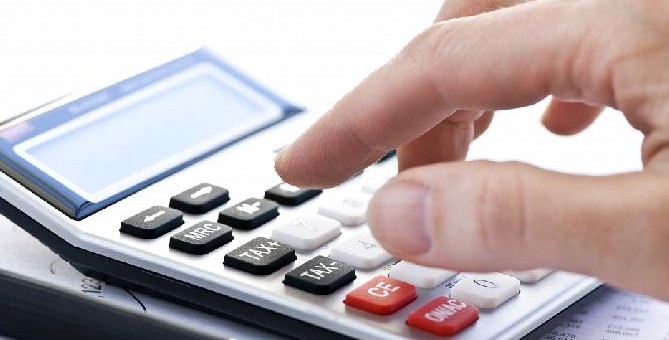Revenue minus costs equals profit. The formula is simple, isn’t it? It’s almost impossible to get it wrong, there can be no room for error.
Calculating the profit margin of your products may seem simple at first glance, but the reality is that this task is crucial and complex, especially in the competitive environment of e-commerce. In this article, we will uncover the keys to correctly calculate profit margins and avoid common mistakes that could compromise your earnings. You will learn not only how to calculate the profit margin but also how to interpret these numbers to make strategic decisions that boost the success of your business.
But don’t you know that around 30% of ecommerce companies miscalculate the profit margin of their products? What if I told you that around half of them make price changes without knowing what margin they have left?
What if I told you that you may be losing money and you don’t know it?
To err is human and we wondered how many of our customers were hesitant to calculate the margin. We observed them and discovered that this was the case: 40% were unaware that they were making a mistake of this magnitude and their faces of surprise were huge when boardfy showed them that they were losing money.
Therefore, we want to give you a few tips to try not to make the same mistakes as we did.
The pitfalls
By profit margin we mean the difference between the selling price (excluding VAT) and the costs (production, acquisition, shipping, management…).
As you can see, it does not seem a complicated calculation, although depending on how many variables enter into the equation it can become more complex than it seems.
How to do the right calculations: the trap of the margin formula

One of the most frequent mistakes is how to calculate the margin on sales by ecommerce. It is a typical mistake. Very common and when someone explains it to you, you wonder how you have been able to get here alive without having seen it before.
Imagine we have a product to sell that has a total cost of about €100 and from which we want to get a return of 30%. At what price should we sell it? At €130 would be the usual answer. If the first thing you think is yes, we’ve already messed up. The answer is NO.
Let’s continue with the example so that you realise why this is NOT the way to do it. Imagine that you want to make a promotion of your product and you sell it with a 25% discount for a couple of days. In principle, it seems all right, right, we had a margin of 30% and we have lowered it by 25%? We should make a 5% profit, but let’s do the maths.
The selling price is 130 €. 25% of 130 is 32,5 €.
Final selling price: 130 -32,5= 97,5 €.
Remember, product cost: 100 €. We would be losing €2.5 for each product.
The error is in calculating the profit margin on the cost (€100), but the discounts are offered on the selling price (€130). Margins are not calculated on the purchase price, they are calculated on the selling price.
This is the incorrect formula used in the example:

And this is the right formula we should use:

If we apply the latter formula to the example above, the appropriate price would be as follows:

Now we apply the 25% discount on this selling price and voila: we would be left with a final price of 107.15 € and a positive margin of 7.15 €.
Calculation errors: the VAT calculation

Another error we have encountered is when calculating VAT on products. It is also a complicated error to detect because the effects are deferred when it comes to charging VAT.
VAT is an indirect tax on consumption and is levied on the supply of goods and services carried out by entrepreneurs and professionals.
The problem comes when calculating this VAT percentage (21% in Spain) when setting prices by companies or professionals.
At Boardfy we have detected that some clients were making losses on a large number of their products and when reviewing the formulas for calculating the final sale price we realised that the one used by some of our clients was as follows:

Let’s suppose that instead of a 30% margin on sales we establish a 5% margin to be competitive. Keeping the rest of the values of the example we used a few lines above, the final sales price for the customer would be:

So far so good: the same selling price as before, but now we add VAT, so the profit margin we are left with is the same. Or maybe not?
With the calculations we had made with our formula for VAT the profit margin we would be left with is:

And that is the margin we have counted on for 3 months for all our operations. The problem comes three months later with the VAT settlement, when we have to charge VAT and the accounts do not add up, as the tax office tells us that the VAT to be charged for this product is €26.51.
And it is precisely at that moment that we are left with a blank face, because if we calculate our margin with that value for VAT our real profit for our product is:

From earning €5.26 we have gone to losing €0.25 per product sold… for 3 months.
The answer to this problem can be found in the second part of the definition of VAT:
“VAT is a tax where precisely what you will be paying is related to the value you add to the products or services you have purchased. In other words, it is calculated on the final sale price”.
Our mistake had been to calculate VAT based on our cost instead of the selling price (cost + expected profit margin).
Uncontrolled price reductions
As price intelligence software we strongly support the need for ecommerce to carry out a pricing strategy as a means to beat the competition and increase sales.
The problem arises when we make recurring price cuts without taking into account factors other than the selling price of our competitors.
Since we introduced the possibility of integrating costs into Boardfy, many customers have been astonished to see what their current profit margin was after successive price reductions. They had not taken into account what their costs were for those products and reduced their prices uncontrollably.

The result was that many of them were losing money with every sale on a large number of products.
The good news is that once these errors were detected, they deactivated those products in which they were not competitive and started pricing intelligently according to the profit margin of each item. This allowed them to reduce losses considerably and return to profitability.

These are the main mistakes that ecommerce companies make in relation to their profit margins. As you can see, it is easier than it seems to make a loss with your products, so we encourage you to review your cost, tax and margin calculations, as well as reviewing the return you get from each of your products with Boardfy.
As we have seen, errors in calculating profit margins can quickly lead to significant losses. However, with the right tool and a strategic approach, it is possible to reverse this trend and optimize your profits. At Boardfy, we offer advanced dynamic pricing solutions that will help you keep your prices competitive while ensuring a healthy profit margin.








